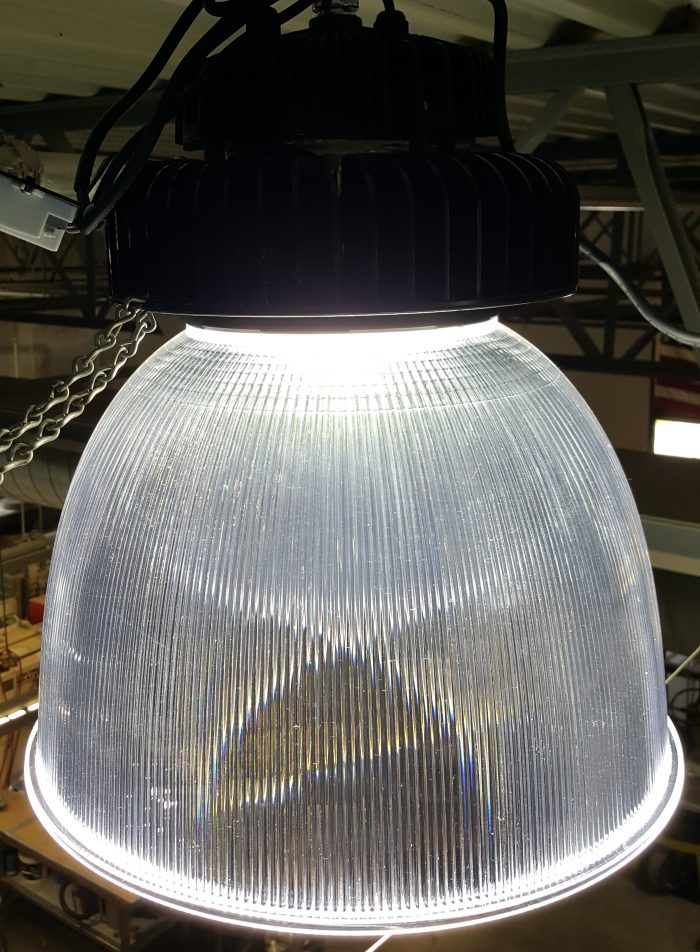LED lights offer lower energy costs and increased savings for companies looking to reduce their carbon footprint while improving their bottom line. With their longer lifespan, LED lights require less maintenance without compromising performance or quality.
Installing a new lighting system in a facility can raise many questions for beginners and experts alike, regardless of the project’s size or scope. Here are two questions worth considering if you are switching the lighting in your warehouse or factory from fluorescent or incandescent to LED lighting.

How do I plan light output coverage?
Planning the LED light output coverage for a factory or warehouse often takes planning and consideration. The local electrical code can vary widely by location and often plays a large role in specific light output requirements for a facility. Before beginning any project you should verify local code requirements and plan accordingly.
Because LED lights are more efficient at directing lighting and spotlighting, they often do not require a one-to-one trade-off. More information can be found at Illuminating Engineering Society (www.ies.org) or the International Association of Lighting Designers (www.iald.org). Both resources should help ensure that once complete, your lighting meets your expectations, code requirements, and user experience needs.
How necessary are lighting controls?
LED lights are the most efficient and easy to use when they are installed in conjunction with an intelligent control system. Very sophisticated wireless systems can be installed that can interface with existing controls. Wireless technology can give users tremendous control over the lighting in a facility. Increased control often equates to increased energy savings. A system of fixtures and sensors paired with web-based software can be configured so that room conditions can be set, adjusted or reset in real time from anywhere.
Unlike other lighting options, LED lights can be dim-cycled rapidly and frequently without any negative effects on performance or the lifespan of the fixture. Being able to adjust lighting levels as needed can also help reduce energy costs in facilities.
